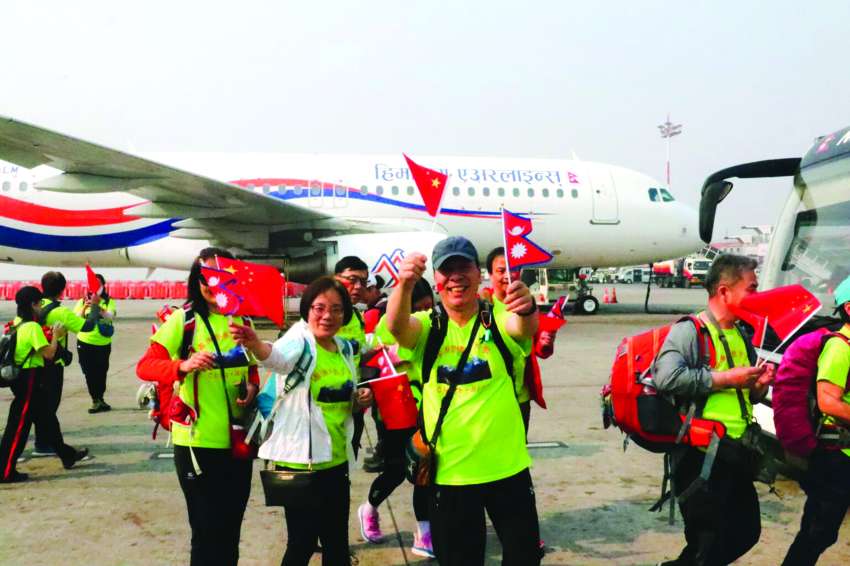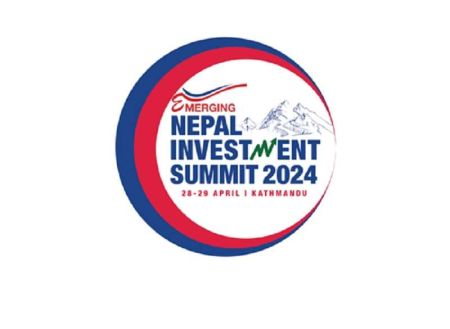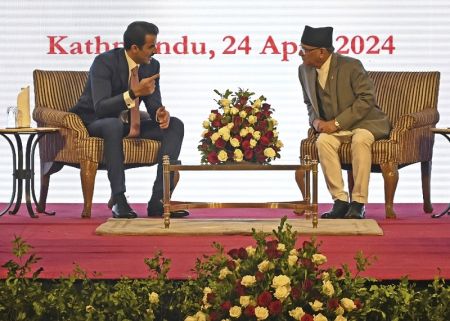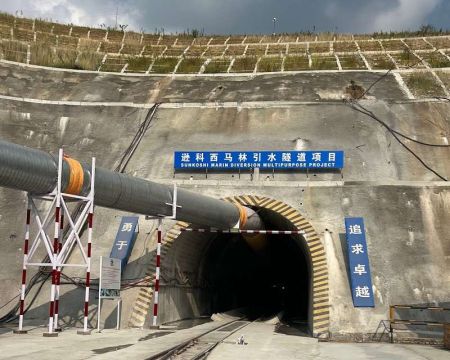Surge in tourist footfall from the north brings hope and optimism to Nepali tourism industry
BY - Tamish Giri
On April 13, a chartered flight operated by Himalaya Airlines brought the first batch of Chinese tourists since the emergence of COVID, consisting of 180 Chinese nationals, to Kathmandu. This marked a significant milestone as China permitted its citizens to travel to Nepal as tourists for the first time in over three years. This has offered a glimmer of hope for travel agents such as Sathi Nepal Travels & Tours. These agents, whose businesses had been adversely affected by the pandemic, now see an opportunity for revival.
Before the Covid outbreak, Sathi Nepal was bringing approximately 500 Chinese tourists to Nepal annually. The vibrant streets of Nepal reverberated with the laughter and excitement of these visitors as they immersed themselves in the country's rich culture and awe-inspiring landscapes. However, the pandemic abruptly severed this flourishing relationship. Subsequent travel restrictions and the Chinese travel ban resulted in a sudden decline in Chinese tourists, leaving companies like Sathi Nepal yearning for their return. Nevertheless, a glimmer of hope emerged when China reopened its borders to allow its citizens to travel to Nepal starting from March 15.
Kishore Raj Pandey, the chairman of Saathi Nepal, hailed China's decision to open Nepal for travel as a significant development for the country's tourism sector. As the pioneer in attracting Chinese tourists to Nepal since 2001, Pandey expressed optimism regarding the positive impact of the return of Chinese visitors on the country's tourism industry.
"Our perseverance has finally paid off. We anticipate a gradual but steady influx of Chinese visitors returning to Nepal. We remain optimistic," Pandey shared.
While the arrival of Chinese tourists has brought a breath of fresh air and a sense of celebration for some, others suggest that travel agents will still need some time to fully recover.
According to the Nepal Tourism Board (NTB), a total of 4,770 Chinese nationals arrived in Nepal by air in April. This makes China the fourth-highest market for Nepal in terms of tourist arrivals. This represents a remarkable 1,255.1% increase compared to the previous April, when only 352 Chinese visitors travelled to Nepal.
Kalyan Raj Sharma, the managing director of Adventure Outdoor Treks and Expedition, views the surge in Chinese tourists as a positive sign for Nepali tourism and the economy. He believes that their presence will bring investment opportunities and cultural benefits, ultimately boosting the country's economic well-being. According to Sharma, the global tourism and trade sectors have been adversely affected by China's post-Covid border closures and travel restrictions. “Prior to the pandemic, Chinese tourists ranked highest in terms of both visitor numbers and spending worldwide. They were also the second-largest source market for Nepal's tourism industry,” Sharma added.
While some travel agents remain optimistic about the growing number of Chinese tourists, others anticipate that it will take time for the figures to return to pre-Covid levels.
In 2013, Nepal welcomed over 100,000 Chinese tourists for the first time, while the numbers reached 123,805 in 2014. Although the numbers fell following the 2015 earthquakes. It bounced back soon, reaching 153,633 in 2018. The highest number of Chinese tourists arrived in Nepal in 2019, totaling 169,543. However, due to the Covid-19 outbreak, the numbers plummeted to 19,257 in 2020, and further declined to a low of 6,198 in 2021.
According to travel agents, popular destinations among Chinese tourists in Nepal include Pokhara, Chitwan, Lumbini, Kathmandu, and the Annapurna region.
The Nepali tourism industry has always been a crucial contributor to the country's economy. A higher number of Chinese tourists can undoubtedly have a positive impact. China is a significant player in the global tourism market, and Nepal has actively promoted itself as an appealing destination for Chinese travellers in recent years.
Pandey, however, noted that the growth in Chinese tourist arrivals has been slow, with only two groups of Chinese guests received during the spring season this year.
Additionally, the air connectivity between Nepal and China has progressed slowly. Currently, China Southern, Air China, Cathay Pacific, and Sichuan Airlines offer direct flight connectivity between the two countries. Himalaya Airlines, which facilitated the arrival of the first batch of Chinese tourists after Covid, and Nepal Airlines have not resumed their commercial flights to China yet.
“Before the pandemic, Chinese airlines used to operate daily flights to Kathmandu. However, currently, they are only operating four flights per week. Nepali carriers, Nepali Airlines and Himalaya Airlines, have not yet resumed flights on the route,” said Pandey.
The limited availability of flights from China has resulted in high airfare, according to tour operators. Flight ticket prices for the Chengdu-Kathmandu-
Chengdu route, which were Rs 45,000 in 2019, have now increased to Rs 80,000. Similarly, flight tickets to Beijing, which previously cost around Rs 50,000-60,000, now cost approximately Rs 140,000. Currently, there are no direct flights available from Kathmandu to Beijing. However, a charter flight on the sector is scheduled to start on June 24.
Before the Covid-19 pandemic, Chinese and Nepali carriers operated regular flights to several destinations including Chengdu, Guangzhou, Kunming, Guyuan, and Shenzhen. The airlines conducted two daily flights from Guangzhou, with daily flights from Kunming and Chengdu, as well as weekly flights from Guyuan and Shenzhen.
Pandey said there needs to be a significant increase in the number of flights and a reduction in air ticket prices for the number of Chinese tourists to grow in Nepal. Currently, the reduced flight availability and high ticket fees are major hindrances, he added.
Sharma said it is the responsibility of the government and the Nepal Tourism Board (NTB) to initiate promotional campaigns to bring more Chinese tourists. “All three stakeholders - the government, the NTB, and the private sector - must work together to promote Nepali destinations and bring more Chinese tourists to Nepal. “We also need to focus on improving infrastructure and services to enhance the overall experience for Chinese tourists visiting Nepal,” he added.
Meanwhile, NTB has been organising various tourism promotion activities with a focus on China. Mani Lamichhane, a director at NTB, said that they recently conducted sales missions in Kunming, Chengdu, and Beijing to engage with Chinese travel agents and promote Nepal as a desirable destination.
He also shared that the number of bookings from Chinese tourists has been increasing, and travel agents in Nepal have been receiving positive responses from their Chinese counterparts. According to NTB, the bookings have shown growth across various segments, with a notable increase from high-end and middle-end Chinese tourists.
Additionally, the NTB is planning to carry out promotion and marketing activities in Lhasa of Tibet, followed by a gradual expansion into other major Chinese markets. The (NTB) is taking further steps to attract Chinese tourists by organising a Dragon Boat tourism promotion event in Pokhara next month. This event specifically targets Chinese tourists.
China, as the country’s second largest tourist market, plays a crucial role in the Nepali tourism sector. “In the initial phase of our sales and promotion events, the focus is on educating Chinese tourists about Nepal's open tourism status,” Lamichhane said, adding that he remains hopeful that the number of Chinese tourists will exceed 100,000 in 2023.






















